If you’re anything like me, you remember the days when a 500GB hard drive felt like limitless space. Fast forward a decade, and that 500GB barely covers the operating system and maybe two modern AAA games. The reality is, our data consumption—from high-resolution video editing projects and massive game libraries to complex software development environments—has utterly exploded.
We’ve reached a critical inflection point where 1TB is standard entry-level storage, and 2TB drives are quickly becoming the bare minimum for serious enthusiasts. But for those of us who demand maximum performance, uncompromising capacity, and future-proofing, the focus has shifted entirely: we need the best 4TB SSD.
Choosing the right solid state drive (SSD) isn’t just about picking the biggest number on the box; it involves navigating complex factors like speed metrics (sequential vs. random), endurance ratings, and interface types (PCIe 4.0 vs. 5.0). As a hardware enthusiast who has built countless systems, I want to walk you through exactly what you need to know. We’re going to demystify the technology and help you select the ideal drive that offers the perfect balance of speed, reliability, and value, ensuring you have the absolute best PC storage solution available today.
Contents
- 1 Why 4TB is the New Sweet Spot for PC Storage
- 2 Understanding the Landscape: Types of 4TB SSDs
- 3 Crucial Factors When Choosing the Best 4TB SSD
- 4 Our Top Picks for the Best 4TB SSDs in 2024 (A Detailed Breakdown)
- 5 Installation and Optimization: Getting the Most from Your Best PC Storage
- 6 The Future of Storage: Beyond 4TB
- 7 Final Verdict: Investing in the Best 4TB SSD
Why 4TB is the New Sweet Spot for PC Storage
It seems like only yesterday the focus was on finding the best 2tb ssd deal. While 2TB drives still offer incredible value, the jump to 4TB is no longer a luxury—it’s a necessity for power users, content creators, and dedicated gamers.
The Shift from Terabytes to Terabytes: The Data Explosion
We live in a high-fidelity world. Modern games often require over 100GB of installation space, and 4K video editing projects can consume terabytes of scratch space in a single week. If you rely on your PC for professional work or truly want to enjoy massive game libraries without constant installation shuffling, capacity anxiety is a real problem.
When you’re running multiple operating systems, maintaining large photo and video archives, or hosting virtual machines, that storage space vanishes remarkably quickly. By opting for the best 4tb ssd, you gain the peace of mind that comes from knowing your system is ready for whatever the next few years throw at it. It frees up your time, allowing you to focus on creating or playing, rather than managing storage partitions.
Why 2TB Just Isn’t Enough Anymore
While 2TB is fantastic for a primary boot drive for many casual users, it forces compromises for enthusiasts. Think about the common setup:
- Operating System & Applications: ~200GB
- Primary AAA Games (4-5 titles): ~500-800GB
- Project Files/Media Cache: ~500GB
- Miscellaneous (Downloads, Documents, Photos): ~200GB
- Room for Updates/Over-provisioning: ~200GB
Suddenly, your 2TB drive is nearly full. When an SSD runs too close to capacity, its performance often degrades significantly. The drive controller needs empty space (known as over-provisioning) to effectively manage wear leveling and garbage collection. By moving up to a 4TB model, you ensure the drive always has ample free space, maximizing its sustained performance and extending its overall lifespan. This capacity boost is truly transformative for the overall user experience and is a cornerstone of the best PC storage strategy.
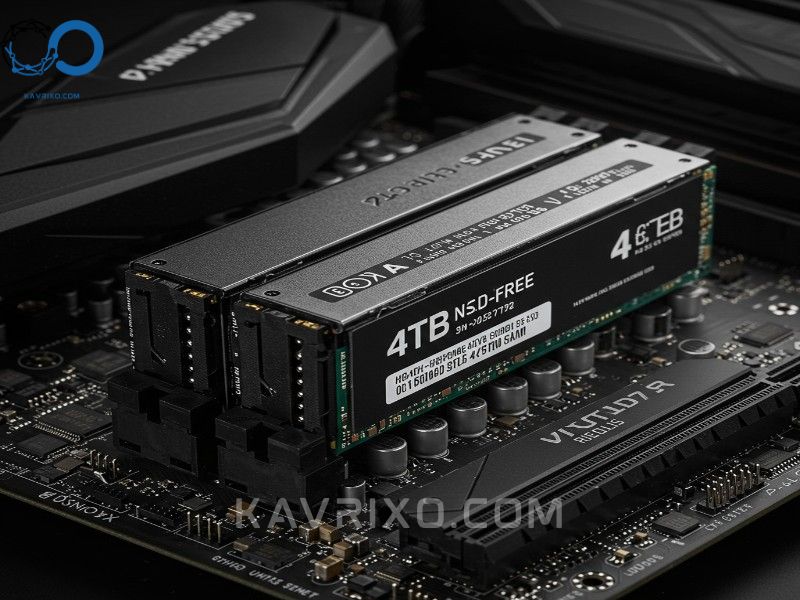
Understanding the Landscape: Types of 4TB SSDs
When you start shopping for the best 4tb ssd, you quickly realize that “SSD” is an umbrella term. The form factor and interface you choose will dramatically affect both the installation process and the resulting speed of your system.
M.2 NVMe SSDs: The Speed Champions
This is where the excitement is. NVMe (Non-Volatile Memory Express) drives use the high-speed PCIe (Peripheral Component Interconnect Express) lanes directly, bypassing the older, slower SATA interface.
- Form Factor: M.2 (a small stick resembling a gum wrapper).
- Performance: Unmatched. Modern PCIe 4.0 drives hit sequential read/write speeds of 7,000 MB/s, and the newest PCIe 5.0 drives are pushing well over 10,000 MB/s. This is 10 to 20 times faster than traditional SATA drives.
- Ideal Use: Primary boot drives, gaming storage, high-end content creation, and professional workstations where every millisecond counts. If you’re building a powerful new machine, your primary goal should be securing the best 4tb ssd NVMe drive your budget allows.
2.5-Inch SATA SSDs: Reliability and Compatibility
While NVMe reigns supreme in speed, SATA drives still have a very important place, especially in older systems or as high-capacity secondary storage.
- Form Factor: A small, square 2.5-inch enclosure, mimicking laptop hard drives.
- Performance: Capped at around 550 MB/s due to the SATA 3.0 interface limitation.
- Ideal Use: Excellent for upgrading older laptops or desktops that lack M.2 slots, or for use as dedicated backup storage or a massive game dumping ground where absolute peak speed isn’t required. They are typically cheaper than NVMe drives and offer a straightforward path to upgrade your best pc storage without replacing the entire motherboard.
External Portable 4TB SSDs: Mobility Meets Capacity
External 4TB SSDs connect via USB 3.2 Gen 2 or Thunderbolt and are crucial for professionals who need to move massive files quickly between workstations (e.g., photographers moving raw footage, or designers working remotely).
- Performance: Varies widely, often hitting speeds between 500 MB/s (USB 3.1) and 2,000 MB/s (USB 3.2 Gen 2×2).
- Benefits: Highly durable, shock-resistant, and incredibly fast for portable storage. If your work demands high capacity on the go, this is the way to go.
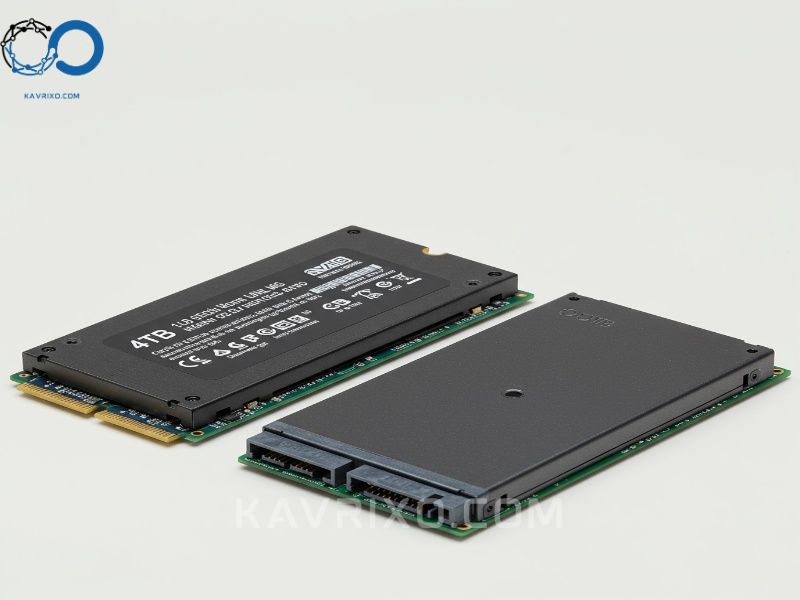
Crucial Factors When Choosing the Best 4TB SSD
Diving into the specifications can feel overwhelming, but understanding these three key metrics will ensure you make an educated choice that fits your specific workload and guarantees longevity.
Speed Metrics: Sequential vs. Random Performance
When manufacturers advertise speeds, they usually cite the highest sequential read/write numbers (e.g., 7,300 MB/s).
- Sequential Speeds: This is the speed at which the drive can read or write large, contiguous blocks of data (like copying a single massive video file). This is important for video editors or users doing large file transfers.
- Random Speeds (IOPS): This is arguably the most critical metric for general PC responsiveness. IOPS (Input/Output Operations Per Second) measure how quickly the drive can access tiny, scattered pieces of data. When you boot Windows, load applications, or browse files, the drive is performing random reads. A high IOPS rating is what makes your operating system feel “snappy.”
When reviewing potential options for the best 4tb ssd, don’t just look at the big sequential numbers; dig into the random read/write IOPS figures (measured in thousands, e.g., 1,200K IOPS). High IOPS mean a better daily user experience.
Endurance and Warranty (TBW – Terabytes Written)
Capacity is important, but endurance is key to longevity. SSDs have a finite lifespan defined by how much data can be written to them before the NAND cells start to fail. This is measured in Terabytes Written (TBW).
For a high-end 4TB drive, you should expect a TBW rating often in the range of 2,400 TBW to 3,000 TBW.
To put this in perspective, if you write 500GB of data every single day, a 2,400 TBW drive would last well over 13 years. For the vast majority of users, running out of TBW is highly unlikely before you upgrade your system. However, looking for a high TBW rating and a robust 5-year warranty is a strong indicator of component quality and manufacturer confidence.
Controller and NAND Flash Technology (TLC vs. QLC)
The SSD controller is the CPU of the drive, handling complex tasks like wear leveling and data management. Brands like Phison, Samsung (in-house), and Silicon Motion produce the best controllers. A quality controller is essential for maintaining speed even under heavy load.
The flash memory itself comes primarily in two types for mainstream use:
- TLC (Triple-Level Cell): Stores 3 bits per cell. Offers excellent balance of speed, endurance, and cost. Most of the best 4tb ssd options use TLC NAND.
- QLC (Quad-Level Cell): Stores 4 bits per cell. Cheaper and denser, allowing for higher capacity drives (often seen in 8TB and higher models), but generally slower and less durable than TLC.
If peak performance and longevity are your primary goals, prioritize drives utilizing TLC NAND paired with a modern, high-speed controller (especially for PCIe 4.0 and 5.0 drives).
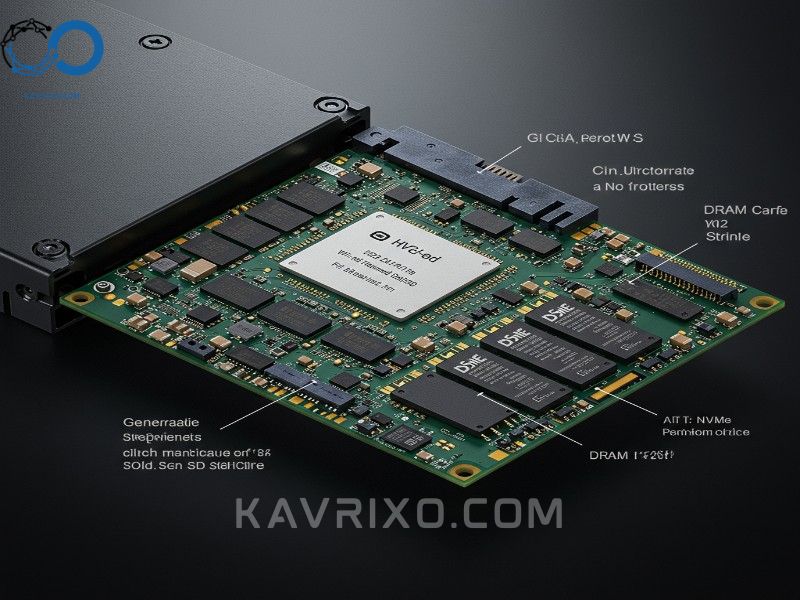
Our Top Picks for the Best 4TB SSDs in 2024 (A Detailed Breakdown)
Now that we understand the technical jargon, let’s look at the drives that are truly leading the market. We’ve selected drives that represent the ultimate in performance, value, and reliability, covering all the major use cases.
Best Overall High-Performance NVMe: The Flagship Choice
For those who want zero compromise and the absolute fastest loading times possible, you need a flagship PCIe 4.0 or next-generation PCIe 5.0 drive.
The Top Contender (PCIe 4.0): Samsung 990 Pro 4TB Samsung has consistently delivered some of the best PC storage solutions, and the 990 Pro is their current king of the hill for PCIe 4.0. It boasts blistering sequential speeds (up to 7,450/6,900 MB/s) and exceptional random read/write performance, meaning your system feels instantly responsive. Crucially, the 4TB model typically offers outstanding TBW endurance, making it a reliable workhorse for professional video and 3D rendering tasks.
The Speed Demon (PCIe 5.0): Crucial T700 4TB or Gigabyte AORUS Gen5 12000 4TB If you are running a brand-new motherboard (e.g., Z790 or X670) that supports PCIe 5.0, these drives push the boundaries, often exceeding 12,000 MB/s. While this level of speed is currently overkill for most games, it drastically cuts down on loading times for massive datasets. Be warned: PCIe 5.0 drives run hot, so you must ensure your motherboard has a robust heatsink or plan for active cooling.
Best Value and Reliability: The Workhorse SSD
If you need fantastic performance that approaches the flagships but at a more manageable price point, the “workhorse” category is perfect. These drives deliver robust TLC NAND and excellent controllers without the “bleeding edge” premium.
The Mid-Range Champion: Crucial P5 Plus 4TB or Western Digital Black SN850X 4TB The WD SN850X 4TB is a frequent contender for the title of best 4tb ssd because it offers near-flagship performance (around 7,300 MB/s) but often sees aggressive pricing. It’s highly regarded in the gaming community due to its low latency and consistent performance. Similarly, the Crucial P5 Plus provides excellent sustained performance, making it a superb, reliable choice for both gaming and heavy multitasking.
Best Budget 4TB SATA Option: Massive Capacity for Less
Sometimes, you just need sheer volume, and your system may not have a spare high-speed NVMe slot. This is where the budget SATA drives shine.
The Capacity King: Crucial MX500 4TB or Samsung 870 EVO 4TB These drives offer the maximum possible speed over the SATA 3.0 interface (around 560 MB/s) and are based on proven, highly reliable TLC technology. While they won’t compete with NVMe speeds, they offer dependable, massive storage capacity at a fraction of the cost per gigabyte compared to their NVMe counterparts. They are the ideal choice for secondary game libraries or backup archives, providing the best pc storage density for non-critical files.
Best for PS5 and Gaming Consoles
The PlayStation 5 requires an M.2 NVMe drive that meets specific speed and physical dimension requirements (especially regarding the heatsink size).
The Console Favorite: Seagate FireCuda 530 4TB (with heatsink) The FireCuda 530 consistently surpasses the PS5’s required 5,500 MB/s threshold. Its included, low-profile heatsink ensures it fits perfectly into the PS5’s internal expansion slot while maintaining optimal thermal performance—a non-negotiable requirement for console storage expansion. We consider this one of the best 4tb ssd options for console gamers needing serious capacity.
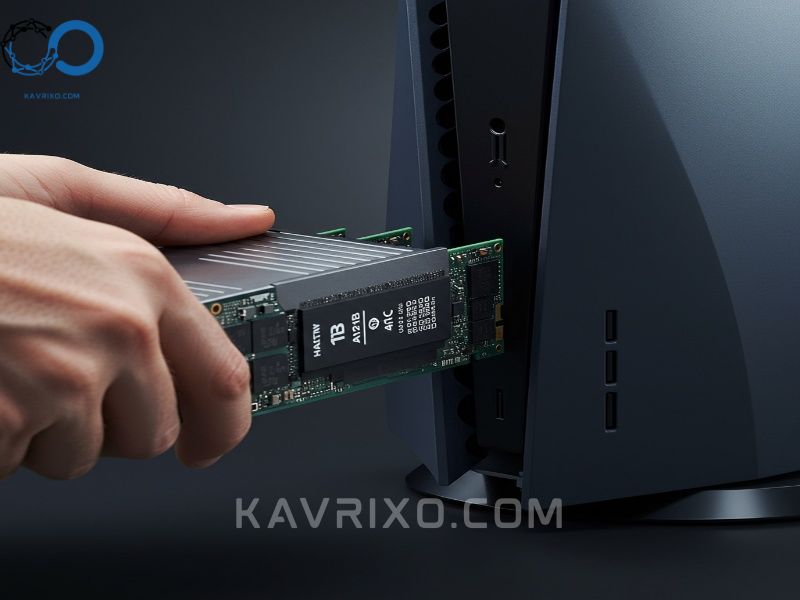
Installation and Optimization: Getting the Most from Your Best PC Storage
Buying the best 4tb ssd is only half the battle. Proper installation and optimization are crucial for maximizing the performance and longevity of your new drive.
Physical Installation Steps (M.2 vs. SATA)
M.2 NVMe Installation:
- Locate the Slot: On modern motherboards, the primary M.2 slot is often found near the CPU socket, usually covered by a decorative heatsink.
- Thermal Protection: Always use the motherboard’s dedicated M.2 heatsink and thermal pad if available. This is vital, especially for high-speed PCIe 4.0/5.0 drives, which can throttle (slow down) dramatically if they overheat.
- Insert and Secure: Gently slide the M.2 stick into the slot until the gold contacts disappear, then secure the drive with the tiny retention screw or quick-release mechanism.
2.5-Inch SATA Installation:
- Mounting: Secure the drive in a 2.5-inch bay or mounting bracket within your PC case.
- Cabling: Connect one SATA data cable (to the motherboard) and one SATA power cable (from the power supply). It’s physically impossible to plug them in incorrectly, so don’t worry!
Ensuring Optimal Cooling and Thermal Throttling Prevention
I cannot stress this enough: speed generates heat. High-end NVMe drives under sustained load (like large file transfers or texture streaming in games) can generate significant heat. If the controller hits a critical temperature (often around 80°C or higher), the drive will immediately slow down—a process called thermal throttling—to prevent damage.
When seeking the best 4tb ssd, always prioritize models that either come with a high-quality, pre-installed heatsink or ensure your motherboard’s heatsink is applied correctly. For the absolute fastest PCIe 5.0 drives, you might even consider an aftermarket active cooler (a small fan dedicated to the SSD) to maintain peak performance during the most demanding workloads.
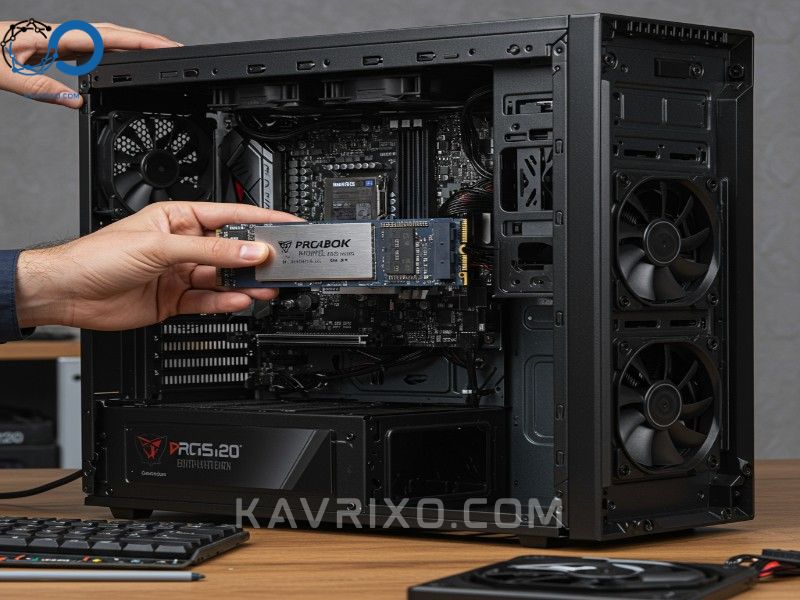
Essential SSD Management Software
Once installed, there are a few simple software steps that ensure your drive performs optimally:
- Initialize and Format: You must initialize the new drive in Windows Disk Management before it appears in File Explorer. Format it using the NTFS file system.
- Firmware Updates: Always download the manufacturer’s SSD utility software (e.g., Samsung Magician, Crucial Storage Executive). These tools allow you to check the drive’s health, run performance benchmarks, and, most importantly, install the latest firmware. Firmware updates often fix bugs and improve performance and longevity.
- TRIM Command: Ensure TRIM is enabled in your operating system. TRIM allows the OS to tell the SSD which data blocks are no longer in use, helping the drive’s garbage collection process run efficiently and maintaining speed over time. (Modern operating systems usually handle this automatically, but it’s worth checking.)
The Future of Storage: Beyond 4TB
While 4TB represents the perfect intersection of capacity, speed, and affordability today, technology never stands still. We are already seeing the emergence of highly competitive 8TB M.2 NVMe drives utilizing QLC NAND to achieve higher density.
The trend is clear: as QLC endurance improves and prices drop, 8TB drives will likely replace 4TB drives as the enthusiast standard in the next 2-3 years. Furthermore, PCIe 5.0 technology is currently in its infancy. As controllers mature, we can expect mainstream PCIe 5.0 drives to offer consistent speeds of 14,000 MB/s or higher, truly redefining what we consider the best PC storage.
However, investing in a top-tier 4TB PCIe 4.0 drive today provides such immense speed and capacity that you are guaranteed performance for years to come without the current price and thermal penalties associated with early PCIe 5.0 adoption.
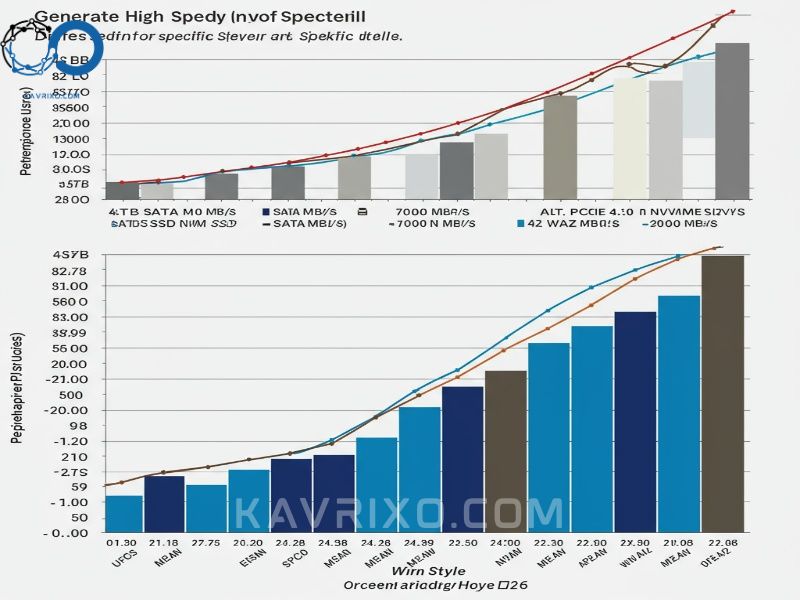
Final Verdict: Investing in the Best 4TB SSD
The decision to upgrade to a 4TB SSD is one of the most impactful performance choices you can make for your computer today. It’s not just about capacity; it’s about eliminating bottlenecks, ensuring your system runs efficiently, and providing the headroom necessary for future software and games.
If you are a hardcore gamer, a dedicated streamer, or a professional content creator, aiming for a high-end TLC-based 4TB NVMe drive—like the Samsung 990 Pro or WD Black SN850X—is the smart move. These are the models that truly deliver on the promise of the best 4tb ssd, offering speeds that make load screens practically vanish.
If your budget is tighter or you are looking for secondary storage for an older system, the reliable Crucial MX500 or Samsung 870 EVO 4TB SATA options provide fantastic value and massive storage density.
Whatever your choice, remember that proper installation, especially thermal management, is key. By following this guide, you are now equipped with the expert knowledge needed to confidently purchase and install your next major system upgrade, transforming your machine into a powerhouse of speed and capacity. Enjoy the lightning-fast load times!
